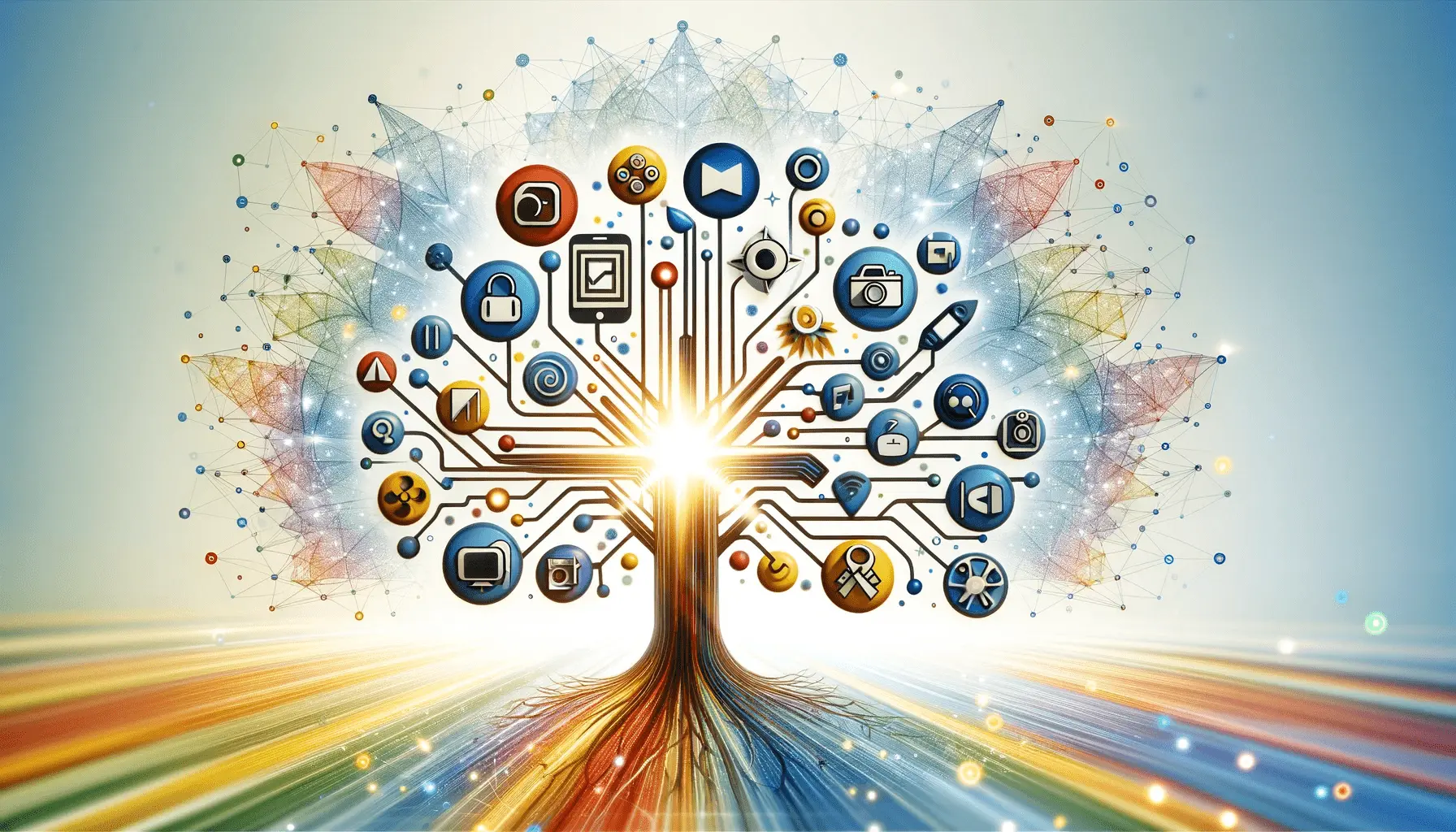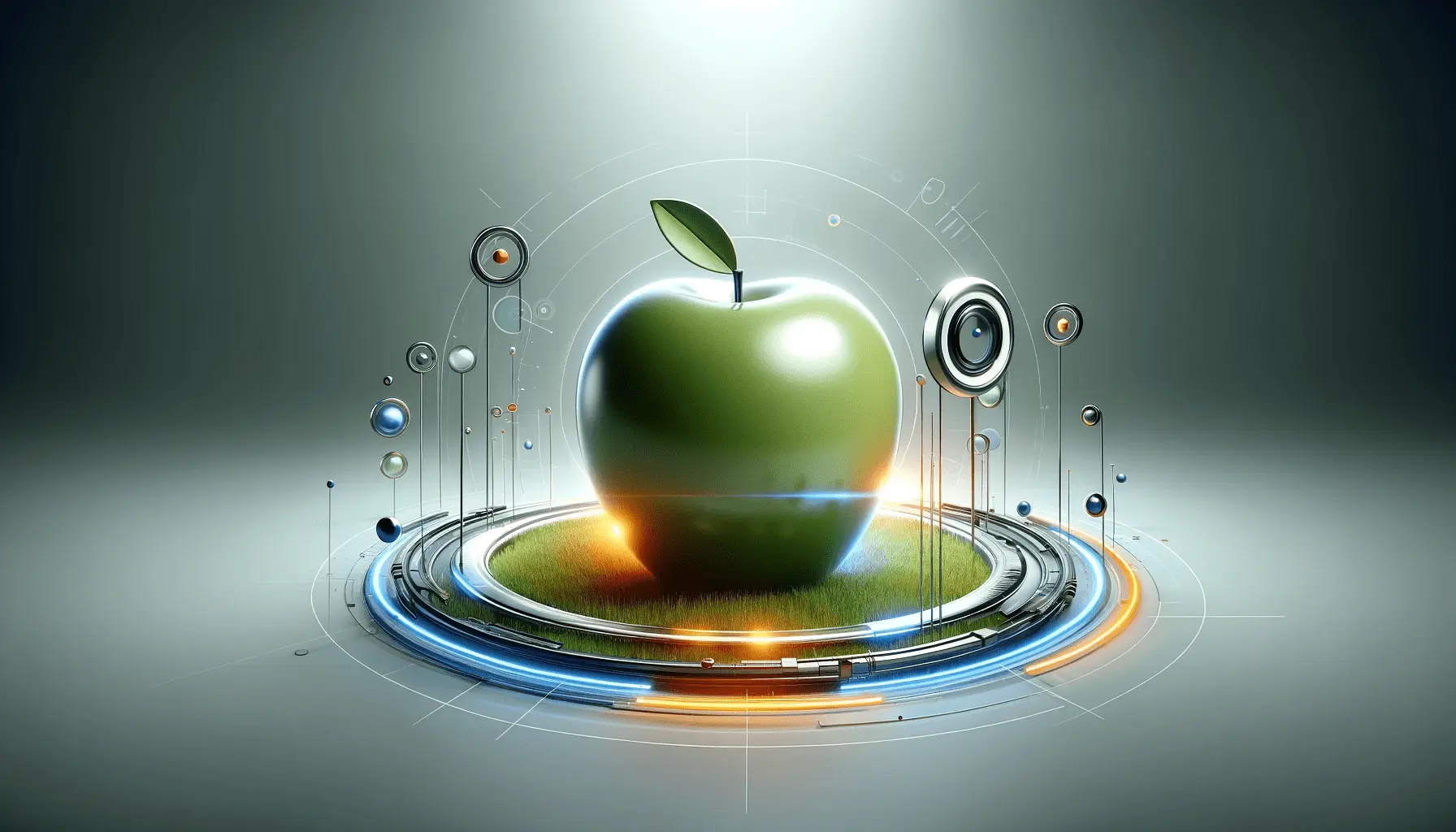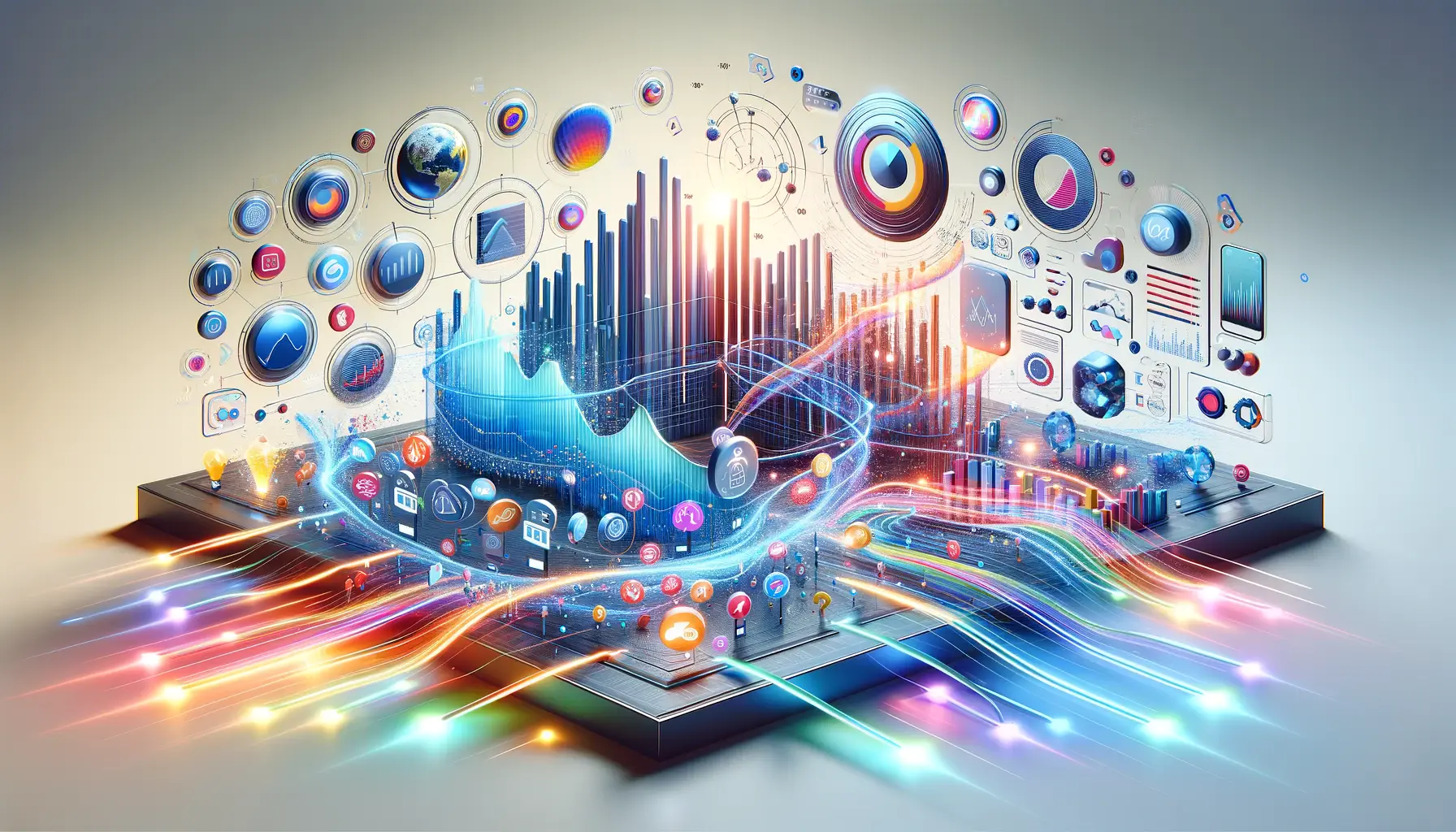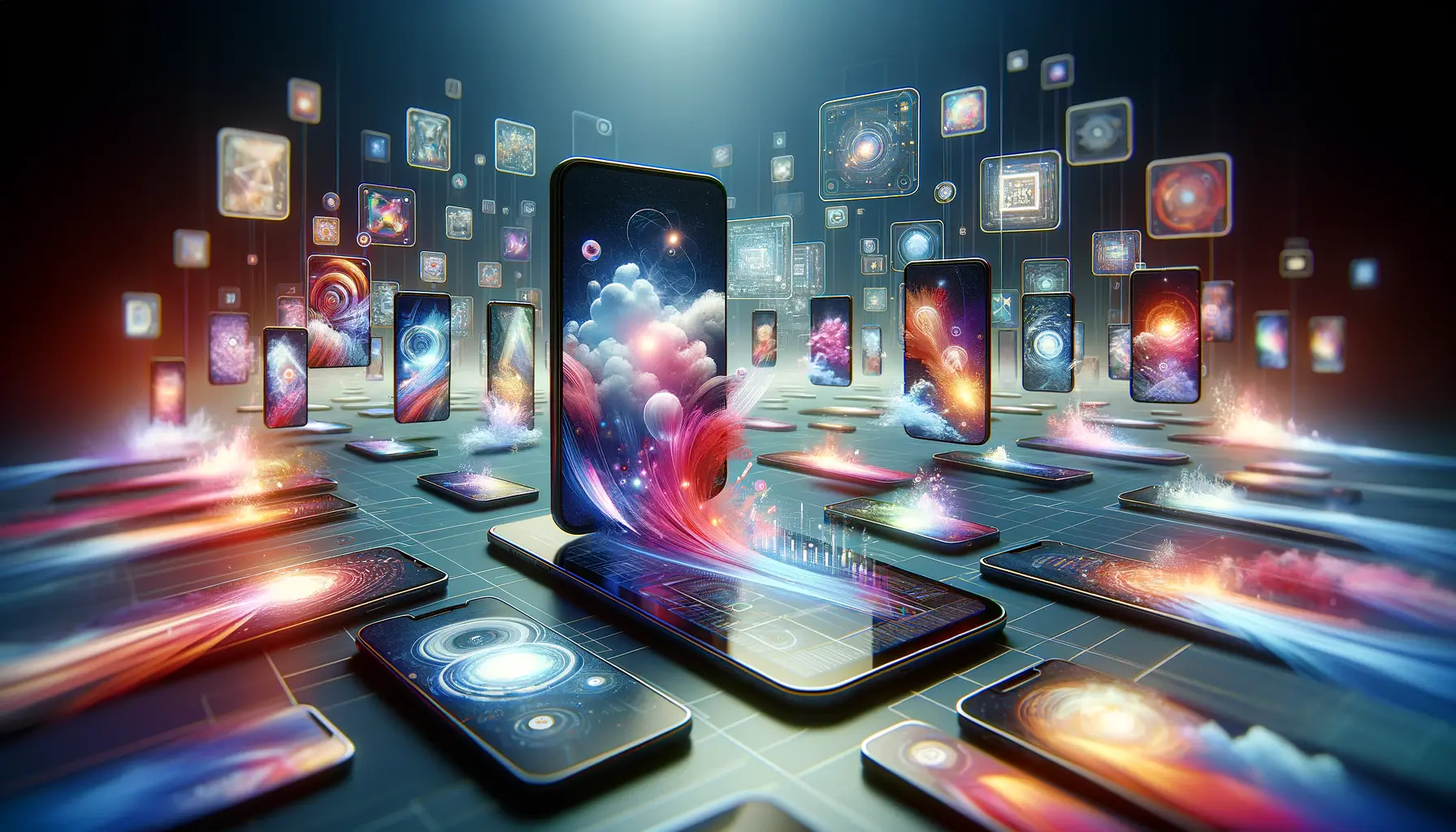The landscape of content marketing is ever-evolving, with multimedia campaigns at the forefront of this transformation.
As we delve into the future trends of multimedia campaigns, it’s essential to recognize the dynamic nature of content marketing and how it adapts to new technologies, audience preferences, and platforms.
Multimedia, encompassing a range of content forms from videos and podcasts to interactive infographics and virtual reality, offers an immersive experience that traditional text-based content cannot match.
This shift towards more engaging, diverse content formats is not just a trend but a fundamental change in how brands connect with their audiences.
The integration of various media types into cohesive campaigns allows for storytelling that engages the senses, enhances message retention, and drives deeper audience engagement.
As we look ahead, the future of multimedia campaigns is set to be shaped by several key trends, including the rise of artificial intelligence, the increasing importance of personalization, and the expansion of immersive technologies like augmented and virtual reality.
These developments promise to make multimedia campaigns more interactive, tailored, and immersive, offering unprecedented opportunities for brands to captivate and engage their target audiences.
- The Evolution of Multimedia in Content Marketing
- Advancements in Technology and Their Impact
- Emerging Platforms and Distribution Channels
- Integrating Data Analytics for Enhanced Campaigns
- Content Personalization and User Experience
- Storytelling and Emotional Connection
- Future-Proofing Multimedia Campaigns
- Conclusion: Navigating the Future of Multimedia Campaigns
- Multimedia Campaigns: Future Trends FAQ
The Evolution of Multimedia in Content Marketing
The Shift Towards Interactive Content
Interactive content has emerged as a powerful tool in multimedia campaigns, transforming passive viewers into active participants.
This trend is driven by the desire for more engaging and memorable content experiences.
Interactive quizzes, polls, and infographics not only provide value but also encourage users to engage directly with the content, leading to higher engagement rates and improved data collection for brands.
As technology advances, we can expect to see even more sophisticated forms of interactive content.
For example, augmented reality (AR) experiences integrated into campaigns can offer users a unique and immersive way to interact with products or services before making a purchase decision.
This level of interaction not only enhances the user experience but also provides brands with valuable insights into consumer preferences and behavior.
Personalization at Scale
Personalization has been a buzzword in marketing for years, but the future of multimedia campaigns will take this concept to new heights.
Advances in AI and machine learning are making it possible for brands to create highly personalized content experiences at scale.
This means delivering the right message, through the right medium, to the right person, at the right time, enhancing the effectiveness of multimedia campaigns significantly.
Imagine video content that adapts in real-time based on viewer preferences or interactive experiences that change based on user input.
This level of personalization not only improves user engagement but also increases the likelihood of conversion by delivering a more relevant and compelling content experience to each individual.
The future of multimedia campaigns lies in creating engaging, interactive, and personalized content experiences that captivate audiences and drive deeper connections with brands.
Advancements in Technology and Their Impact
The rapid advancement of technology is a driving force behind the evolution of multimedia campaigns.
Cutting-edge technologies such as artificial intelligence (AI), augmented reality (AR), and virtual reality (VR) are reshaping the way brands create and deliver content.
These technologies not only enhance the creativity and interactivity of multimedia campaigns but also open up new avenues for personalized and immersive experiences.
Artificial Intelligence in Content Creation
AI is revolutionizing content creation by enabling the automated generation of content, from written articles to video production.
AI tools can analyze data and trends to produce content that is both relevant and engaging, significantly reducing the time and resources required for content creation.
This automation allows brands to focus on strategy and creativity, ensuring that their multimedia campaigns are both efficient and impactful.
- Automated content generation for faster production cycles
- AI-driven analytics for insights into audience engagement
- Personalized content recommendations to enhance user experience
Augmented Reality and Virtual Reality in Campaigns
AR and VR technologies are taking multimedia campaigns into the realm of immersive experiences.
AR adds a digital layer to the real world, allowing users to interact with virtual elements through their devices.
VR, on the other hand, creates a completely virtual environment, offering an even deeper level of immersion.
These technologies can transform how consumers interact with brands, from virtual try-ons and tours to immersive storytelling that transports users to different worlds.
- AR for interactive product demonstrations and try-ons
- VR for immersive storytelling and virtual experiences
- Enhanced engagement through interactive and immersive content
Incorporating AI, AR, and VR into multimedia campaigns not only enhances the user experience but also sets brands apart in a crowded digital landscape.
Emerging Platforms and Distribution Channels
The digital landscape is continuously evolving, with new platforms and distribution channels emerging regularly.
These platforms offer fresh opportunities for multimedia campaigns, enabling brands to reach their audiences in innovative ways.
Staying ahead of the curve and leveraging these new channels can provide a competitive edge, allowing brands to engage with their target demographics on platforms where they are already active and engaged.
Exploiting Niche Social Media Platforms
While giants like Facebook, Instagram, and Twitter have dominated the social media landscape for years, niche platforms are gaining traction.
These platforms cater to specific interests or demographics, offering a more targeted approach to content distribution.
Brands that can identify and leverage these niche platforms can engage with highly engaged communities, providing tailored content that resonates deeply with their audience.
- Identifying platforms that align with brand identity and audience interests
- Creating platform-specific content strategies to engage niche communities
- Utilizing platform analytics to refine and optimize multimedia campaigns
The Rise of Short-Form Video Content
Short-form video content, popularized by platforms like TikTok and Instagram Reels, has become a staple of multimedia campaigns.
These platforms’ algorithms favor engaging, creative content, providing an opportunity for brands to go viral and reach a vast audience.
The challenge lies in creating captivating, concise content that conveys a message effectively within a limited timeframe.
- Leveraging trends and challenges to increase brand visibility
- Creating engaging, shareable short-form videos that highlight brand values
- Engaging with the community through comments, challenges, and collaborations
Adapting to emerging platforms and distribution channels requires a flexible, innovative content strategy that can quickly respond to new trends and audience behaviors.
Integrating Data Analytics for Enhanced Campaigns
Data analytics play a crucial role in the success of multimedia campaigns, offering insights that can significantly enhance content strategy and execution.
By analyzing audience behavior, engagement patterns, and content performance, brands can make informed decisions that drive the effectiveness of their campaigns.
Integrating data analytics into the campaign development process ensures that content is not only creative and engaging but also aligned with audience preferences and behaviors.
Understanding Audience Insights
Utilizing data analytics tools to gather and analyze audience insights is fundamental for tailoring multimedia campaigns to meet the specific interests and needs of the target demographic.
These insights can reveal valuable information about audience preferences, such as favored content types, engagement times, and platform usage, enabling brands to customize their content strategies for maximum impact.
- Segmenting audiences based on behavior and preferences for targeted content
- Identifying high-performing content types and themes to guide content creation
- Adjusting posting schedules based on analytics to maximize engagement
Optimizing Campaign Performance
Data analytics also allow for the continuous optimization of multimedia campaigns.
By monitoring performance in real-time, brands can identify what works and what doesn’t, making adjustments to content, distribution channels, and engagement strategies as needed.
This iterative approach ensures that campaigns remain dynamic and responsive to audience feedback, leading to improved performance over time.
- Using A/B testing to refine content and messaging for better engagement
- Analyzing engagement metrics to optimize future content and strategies
- Leveraging predictive analytics to forecast trends and prepare content accordingly
Effective use of data analytics enables brands to create more personalized, engaging, and successful multimedia campaigns by understanding and responding to audience needs in real-time.
Content Personalization and User Experience
Content personalization has become a cornerstone of effective multimedia campaigns, driven by the increasing demand for tailored user experiences.
Personalization goes beyond merely addressing the user by name; it involves creating content that resonates with the individual’s preferences, behaviors, and interests.
This approach not only enhances user engagement but also fosters a deeper connection between the brand and its audience, leading to increased loyalty and conversion rates.
Creating Tailored Content Experiences
To achieve a high level of personalization, brands must leverage data and insights to understand their audience deeply.
This understanding allows for the creation of content that speaks directly to the user’s needs and interests, making each interaction feel unique and personal.
Whether through customized video messages, interactive content that adapts to user choices, or personalized product recommendations, the goal is to make the user feel seen and valued.
- Developing user personas based on data to guide personalized content creation
- Implementing dynamic content that changes based on user interaction history
- Utilizing machine learning algorithms to predict and serve user-preferred content
Enhancing User Experience Through Personalization
The ultimate aim of content personalization is to enhance the overall user experience.
A personalized experience not only captivates the user’s attention but also simplifies their journey by presenting relevant content that meets their needs and interests.
This streamlined experience can significantly reduce friction in the conversion process, leading to higher engagement rates, increased satisfaction, and ultimately, greater brand loyalty.
- Designing intuitive content navigation based on user preferences to enhance discoverability
- Customizing call-to-actions (CTAs) to increase conversion rates
- Providing personalized content recommendations to keep users engaged and reduce bounce rates
Personalization is not just a trend but a fundamental shift in content marketing, emphasizing the importance of creating meaningful, user-centric experiences that drive engagement and loyalty.
Storytelling and Emotional Connection
At the heart of successful multimedia campaigns lies the power of storytelling.
Storytelling transcends traditional marketing techniques by forging an emotional connection with the audience.
This connection is crucial for building brand loyalty and driving engagement.
In the digital age, where consumers are bombarded with countless messages daily, a compelling story can cut through the noise and resonate on a deeper level.
Embracing Authentic Narratives
Authenticity is key to effective storytelling.
Brands that share genuine stories, whether it’s their founding story, customer success stories, or behind-the-scenes glimpses, create a sense of trust and relatability.
These narratives should reflect the brand’s values and mission, allowing the audience to see beyond the products or services to the heart of the brand.
Authentic storytelling not only engages the audience but also inspires loyalty by aligning the brand’s values with those of its customers.
- Sharing customer testimonials and success stories to highlight real-life impact
- Utilizing brand history and values as a narrative foundation
- Incorporating user-generated content to showcase authentic customer experiences
Leveraging Multimedia for Richer Stories
The use of multimedia elements can significantly enhance storytelling, providing a richer, more immersive experience.
Videos, images, interactive content, and audio can all be used to bring stories to life, making them more engaging and memorable.
By combining these elements, brands can create multi-dimensional narratives that appeal to different senses and learning styles, ensuring a wider reach and deeper impact.
- Creating video content that showcases stories with emotional depth
- Using interactive timelines or maps to tell brand or product history
- Developing podcast series that delve into topics relevant to the brand’s audience
The integration of storytelling and multimedia creates a powerful tool for brands to connect with their audience on an emotional level, transforming passive viewers into active, engaged community members.
Future-Proofing Multimedia Campaigns
In an ever-evolving digital landscape, future-proofing multimedia campaigns is essential for maintaining relevance and competitiveness.
As new technologies emerge and consumer preferences shift, brands must adopt a forward-thinking approach to their multimedia strategies.
This involves staying abreast of trends, experimenting with new formats and technologies, and being adaptable to change.
By future-proofing their campaigns, brands can ensure that they continue to engage their audience effectively, regardless of how the digital landscape evolves.
Adopting Emerging Technologies
Keeping an eye on emerging technologies and integrating them into multimedia campaigns can provide brands with a competitive edge.
Technologies such as 5G, which offers faster and more reliable internet connections, can enhance the delivery and quality of multimedia content.
Similarly, advancements in AI and machine learning can enable more personalized and interactive content experiences.
Brands that are quick to adopt and experiment with these technologies can set themselves apart in a crowded market.
- Exploring new content formats enabled by 5G, such as high-definition streaming and augmented reality experiences
- Utilizing AI for more sophisticated content personalization and predictive analytics
- Investigating the potential of blockchain for secure and transparent content distribution
Staying Agile and Responsive
The ability to quickly adapt to changes in the digital landscape is crucial for the longevity of multimedia campaigns.
This agility involves not only monitoring trends and technologies but also listening to audience feedback and being willing to pivot strategies as needed.
An agile approach allows brands to refine their campaigns in real-time, ensuring that they remain relevant and engaging to their target audience.
- Implementing feedback loops to gather and act on audience insights
- Conducting regular campaign audits to identify areas for improvement
- Encouraging a culture of innovation and experimentation within the marketing team
Future-proofing multimedia campaigns requires a balance between adopting new technologies and maintaining the agility to adapt to changing trends and audience needs. By embracing innovation and staying responsive, brands can ensure their multimedia campaigns continue to captivate and engage audiences well into the future.
Conclusion: Navigating the Future of Multimedia Campaigns
The journey through the evolving landscape of multimedia campaigns reveals a future where creativity, technology, and personalization converge to create deeply engaging and memorable content experiences.
As brands strive to connect with their audiences in an increasingly digital world, the role of multimedia in content marketing becomes not just important but indispensable.
The future trends of multimedia campaigns underscore the necessity for brands to adapt, innovate, and continually refine their strategies to captivate and engage their target audiences effectively.
The Essence of Innovation and Adaptability
In the realm of multimedia campaigns, the constant evolution of technology and shifting consumer preferences demand a proactive approach to content creation and distribution.
The integration of emerging technologies such as AI, AR, and VR into multimedia campaigns offers brands unprecedented opportunities to create personalized and immersive experiences that resonate with audiences on a deeper level.
However, the key to leveraging these technologies effectively lies in a brand’s ability to remain agile—constantly experimenting, learning, and adapting to the changing digital landscape.
Creating Connections That Last
At the core of future multimedia campaigns is the power of storytelling and emotional connection.
Authentic narratives, supported by innovative multimedia elements, have the potential to transform the way brands interact with their audiences, turning passive viewers into active participants and loyal advocates.
The future of multimedia campaigns will be shaped by brands that not only tell stories but do so in a way that is genuine, engaging, and deeply human.
Strategies for Future-Proofing Multimedia Campaigns
- Embrace emerging technologies early and explore their potential to enhance content engagement.
- Maintain a flexible and responsive content strategy that can quickly adapt to new trends and audience feedback.
- Invest in data analytics to gain insights into audience behavior and preferences, guiding more personalized and effective content creation.
- Foster a culture of innovation within the marketing team, encouraging experimentation with new formats, platforms, and storytelling techniques.
In conclusion, the future of multimedia campaigns is bright, filled with opportunities for brands to engage their audiences in innovative and meaningful ways.
By embracing the trends outlined in this article, brands can navigate the future of content marketing with confidence, creating multimedia campaigns that not only capture attention but also forge lasting connections with their audience.
As we look ahead, the ability to innovate, personalize, and connect will define the success of multimedia campaigns in the ever-evolving digital landscape.
Want your website to top Google search rankings? Leave the SEO to our professional agency!
Multimedia Campaigns: Future Trends FAQ
Explore the most frequently asked questions about the future trends of multimedia campaigns and gain insights into how these evolving strategies can shape your content marketing efforts.
A successful multimedia campaign effectively engages its audience through a mix of content types, tailored messaging, and interactive elements, leading to higher engagement and conversion rates.
AI is revolutionizing multimedia campaigns by enabling personalized content creation, automating processes, and providing insights into audience preferences for more targeted strategies.
Augmented Reality (AR) enhances future campaigns by offering immersive experiences, allowing users to interact with products or environments in a novel and engaging way.
Personalization is crucial because it ensures content resonates with individual preferences, enhancing user engagement and fostering a deeper connection between the brand and its audience.
Brands can leverage emerging platforms by creating tailored content that fits the unique audience and format of each platform, thus tapping into new communities and engagement opportunities.
Storytelling in campaigns creates an emotional connection with the audience, making the brand more relatable and memorable, which can significantly boost engagement and loyalty.
Data analytics enhance campaigns by providing insights into audience behavior, enabling brands to tailor their strategies for maximum engagement and effectiveness.
Marketers should watch for trends in AI and machine learning, immersive technologies like AR and VR, personalized content, and the rise of niche platforms for targeted engagement.













